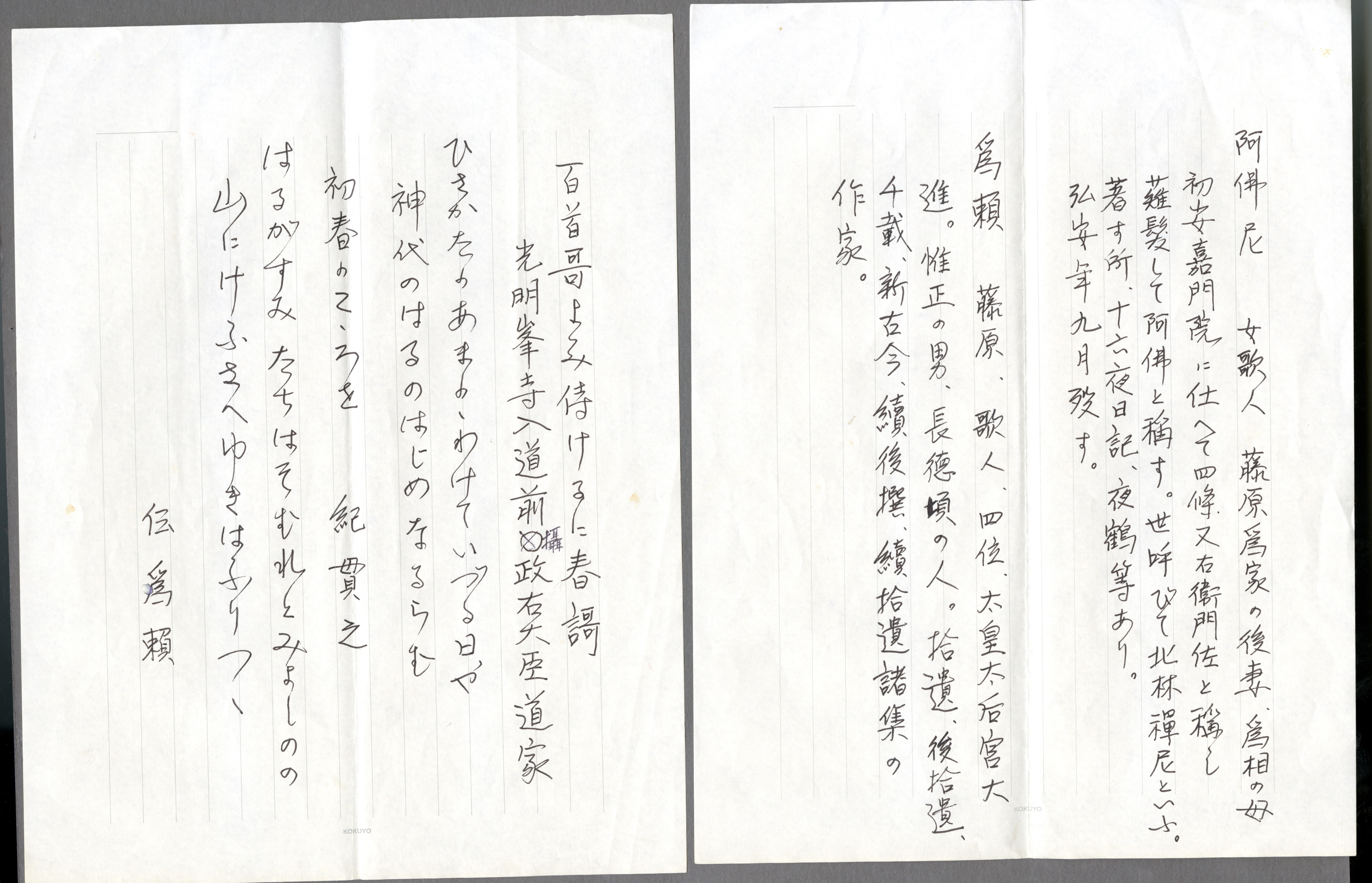Two Poems from the Collection of Poems Ancient and Modern, Continued (Zoku Kokin wakashū)
Traditionally attributed to Nun Abutsu Japanese
Not on view
Nun Abutsu (Abutsu-ni), one of the most celebrated woman writers of the age, earned literary fame for her moving account of palace and temple culture in her Diary of the Waning Moon (Izayoi nikki). Before taking Buddhist vows, she served as a lady-in-waiting in the palace and belonged to a circle of talented women writers. While there is no way to verify that this crisp but elegant calligraphy is in her hand, the style is characteristic of kana calligraphy of the era and of the elite society in which she lived.
Kana calligraphy (used to inscribe Japanese phonetic characters) was referred to as onnade, or the “women’s hand,” since ladies of the court wrote letters, diaries, and prose in the vernacular, while men continued to write primarily in Chinese.
Due to rights restrictions, this image cannot be enlarged, viewed at full screen, or downloaded.
This artwork is meant to be viewed from right to left. Scroll left to view more.




